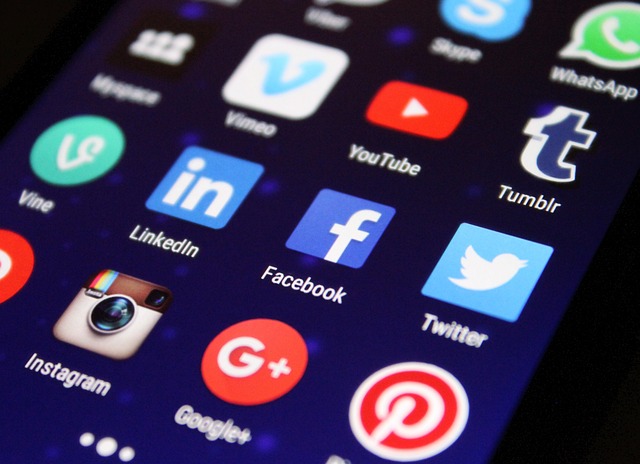In an age where every scroll, tap, and swipe is tracked, the term “online engagement” has become a buzzword for marketers, but it carries a weight far beyond metrics and reach. When platforms are designed to keep users hooked, engagement can turn into an invisible chain that ties our attention, mood, and time to a screen. The subtle shift from casual interaction to compulsive consumption is what turns everyday social media use into a modern form of addiction, affecting mental health, sleep patterns, and even professional performance.
The Mechanics of Online Engagement
Online engagement is built on a foundation of reward circuitry. Platforms use variable‑ratio reinforcement schedules—sometimes a post gets a like, sometimes it doesn’t—mirroring gambling mechanisms that drive habit formation. Notification badges, algorithmic feeds, and the fear of missing out (FOMO) create a feedback loop where the brain releases dopamine each time a new piece of content surfaces. Over time, the brain starts to crave this dopamine surge, making it difficult to break away from the endless stream of curated updates.
- Algorithmic curation prioritizes content that has historically kept users engaged.
- Micro‑notifications trigger quick, repeated check‑ins with the platform.
- Social comparison amplifies the psychological drive to stay connected.
From Casual Use to Compulsive Habits
Many users begin with a clear purpose—keeping in touch with friends or following a favorite influencer. However, the design of modern platforms makes it easy to slide from purpose‑driven interaction to mindless scrolling. The “Infinite Scroll” pattern eliminates natural stopping points, and endless back‑to‑back content reduces the cognitive load needed to decide what to engage with next. As a result, users often find themselves spending hours with little conscious awareness of the time spent.
Neurochemical Responses
When a notification lights up, the brain anticipates a reward. This anticipation triggers the release of neurotransmitters like dopamine and norepinephrine, which enhance focus and pleasure. After the reward, the dopamine levels drop, leading to a craving for the next stimulus. This cycle mirrors the pathophysiology seen in substance addiction, where the brain’s reward system becomes conditioned to seek external stimuli for pleasure and relief from negative states.
Psychological Consequences of Excessive Engagement
Beyond the neurological underpinnings, the psychological toll of over‑engagement is profound. Constant comparison with idealized portrayals can erode self‑esteem, fostering feelings of inadequacy. The pressure to curate a perfect online persona can lead to anxiety, especially when posts do not receive the expected engagement metrics. Cognitive overload from managing multiple online identities also contributes to decision fatigue and diminished mental clarity.
Sleep Disruption
Blue light emitted by screens interferes with melatonin production, the hormone that signals the body to wind down. Late‑night scrolling creates a mismatch between the body’s circadian rhythm and the user’s social media habits. Research shows that individuals who engage heavily with digital content before bedtime report poorer sleep quality, increased daytime fatigue, and higher rates of mood disorders.
Social and Economic Impact
On a societal level, excessive online engagement can erode face‑to‑face communication skills. Relationships that rely heavily on digital interaction often suffer from reduced emotional depth and increased misunderstandings. In the workplace, constant notifications can fragment attention, leading to decreased productivity and higher rates of errors. Employers may find that the cost of distraction outweighs the perceived benefits of a connected workforce.
Workplace Productivity
Studies across industries indicate that employees who check social media frequently during work hours report lower task completion rates and higher stress levels. The “interruption cost” model suggests that each interruption costs a person an average of 23 minutes to regain focus, translating into significant lost hours over a month. Teams that rely on digital communication often face delays due to misaligned expectations and lack of synchronous feedback.
Mitigation Strategies for Healthy Engagement
While the pull of digital platforms is powerful, there are actionable steps individuals and organizations can take to foster healthier online habits. These strategies range from personal self‑regulation techniques to institutional policies that promote digital well‑being.
Digital Literacy and Awareness
Education is a cornerstone of prevention. By learning how algorithms shape the content we see and how notifications are engineered to capture attention, users can make more informed choices about their consumption patterns. Workshops that break down the mechanics of social media can empower users to set intentional boundaries and recognize when engagement turns from a tool to a compulsion.
Support Systems and Community Building
“The journey towards balanced engagement begins with a supportive community that encourages mindful use of technology.” – Dr. Elena Torres, Digital Health Advocate
Peer support groups—both online and offline—provide safe spaces to share experiences and strategies for managing digital habits. Mentorship programs in schools and workplaces can model healthy usage patterns, while counseling services can address underlying issues such as anxiety or depression that may drive compulsive scrolling.
Ultimately, recognizing that “online engagement” can be a double‑edged sword is the first step toward reclaiming agency over our digital lives. By understanding the mechanisms that drive addictive use, acknowledging the psychological and economic costs, and implementing practical mitigation strategies, we can transform our relationship with social media from one of passive consumption to intentional participation. The goal is not to eliminate engagement entirely but to curate it in a way that enriches rather than erodes the human experience.



